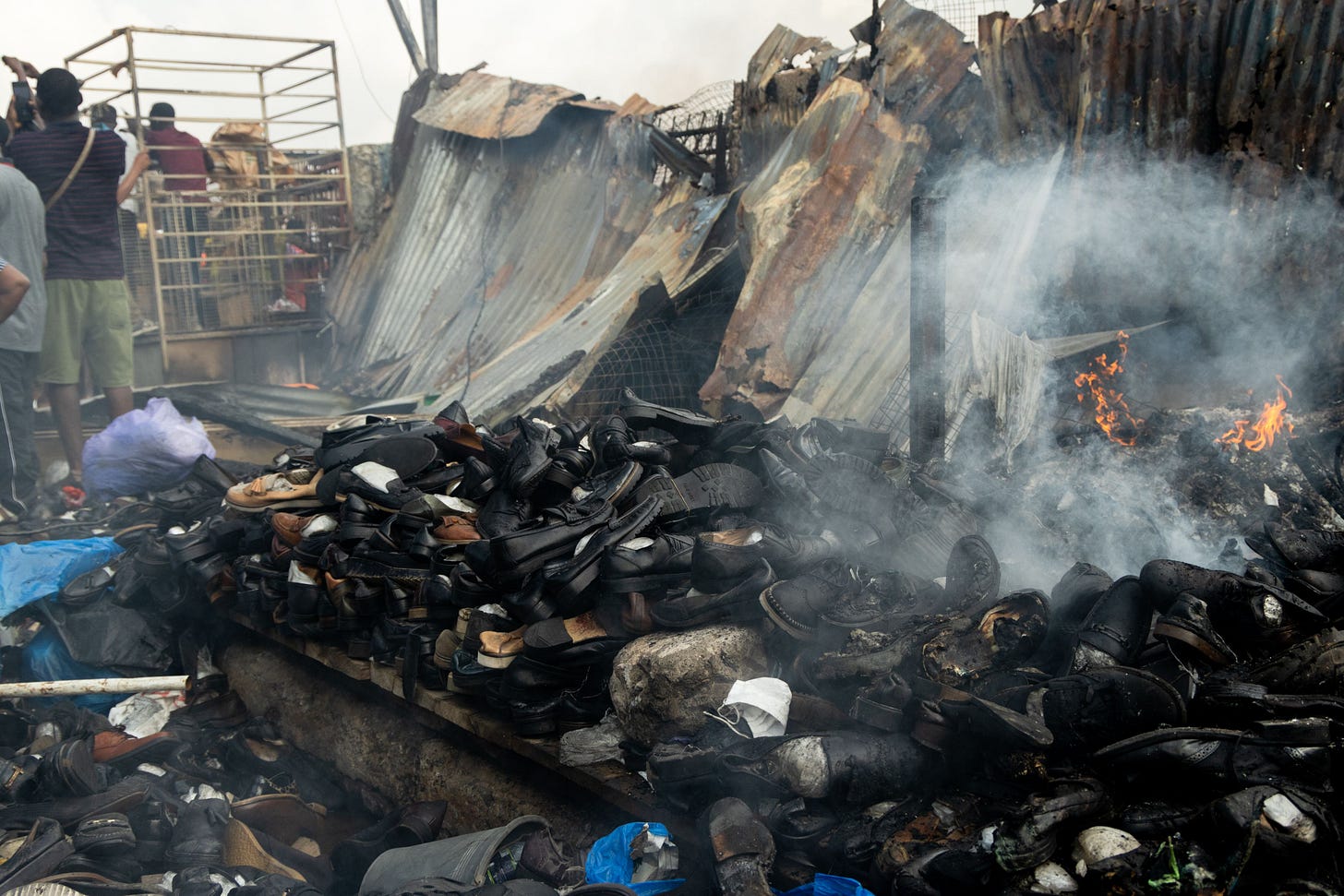The Fire That Changed Everything
On January 1, 2025, a catastrophic fire tore through Kantamanto Market in Accra, Ghana, devastating nearly 75% of the market and leaving over 10,000 traders without their businesses, merchandise, or tools.
Kantamanto isn’t just any market—it’s the beating heart of the global secondhand trade, home to 30,000 people working tirelessly to repair, upcycle, and resell discarded garments. This isn’t just a local tragedy; it’s a crisis that exposes deep flaws in the fashion industry’s wasteful practices.

Fashion’s Dirty Secret: Kantamanto’s Burden
Every week, 15 million secondhand garments arrive from the Global North—castaways from the U.S., U.K., Europe, and China. Kantamanto Market has turned this excess into a circular economy, recirculating 25 million garments a month through resale, reuse, repair, and remanufacturing. But let’s be honest—this isn’t sustainability; it’s environmental colonialism. The West’s overproduction problem has become Ghana’s burden.
This fire isn’t just a disaster—it’s a moment of reckoning. If you haven’t read our story, The Land of “Dead White Man’s Clothes,”now is the time.
Fires, Floods, and Systemic Neglect
This isn’t the first time a fire has broken out in the market—it’s become an almost annual occurrence. Kantamanto’s rapid expansion has been built on ad-hoc construction, making it prone to fires. The market also lacks protection from heavy rains, leading to frequent flooding that shuts down operations. The instability of the market’s infrastructure, combined with a lack of formal investment from the industry that relies on it, has left it vulnerable to disasters like this.
Yayra Agbofah, founder of The Revival, an organization creating new clothing out of textile waste from Kantamanto, estimated that over 2,500 shops and stalls have been “burnt to ashes.” He shared heartbreaking videos of the aftermath, writing, “All we have left is bare ground.” Similarly, Upcycle It Ghana, a non-profit dedicated to upcycling waste, lost their shop to the flames, stating, “This tragic incident has wiped out years of hard work and robbed many of their vital source of livelihood.”


The Or Foundation is Leading the Relief Effort—But They Need Our Help
While major fashion corporations remain silent, The Or Foundation, an environmental justice group based in Accra, has stepped up. They’ve already committed $1 million to relief efforts—hauling debris, covering medical expenses, and distributing direct financial aid to impacted traders, upcyclers, and kayayei (head porters). But let’s be real—rebuilding Kantamanto will take more than just one organization’s effort.
This market has done the work fashion brands refuse to do—giving waste a second life. Now, it’s time for us to step up for them.
Here’s How You Can Help
If you believe in ethical fashion, if you’ve ever bought secondhand, if you claim to care about sustainability—this is your moment to act.
Donate to The Or Foundation’s Kantamanto Fire Relief Fund.
100% of funds go directly to the community—no middlemen, no overhead, just immediate relief for those who need it most.
The Time for Accountability Is Now
This is about more than one fire. It’s about systemic negligence—the fashion industry’s refusal to take responsibility for the consequences of its overproduction. Brands need to do more than greenwash their image with sustainability buzzwords; they need to invest in the communities they’ve impacted.
So what’s it going to be? Will you sit back and watch, or will you take action?
Donate. Share this story. Demand that fashion brands do better.
Kantamanto Market has given the world so much. Now, it’s time we give back.
Follow The Or Foundation for updates:
Instagram: @theorispresent
Website: www.theor.org
For real-time updates and firsthand accounts of relief efforts, follow Yayra Agbofah and Upcycle It Ghana on Instagram. They’re on the ground, sharing the realities of the situation and the ongoing work to rebuild the market.
connect with us: IG → pinterest → Twitter → bluesky







Share this post